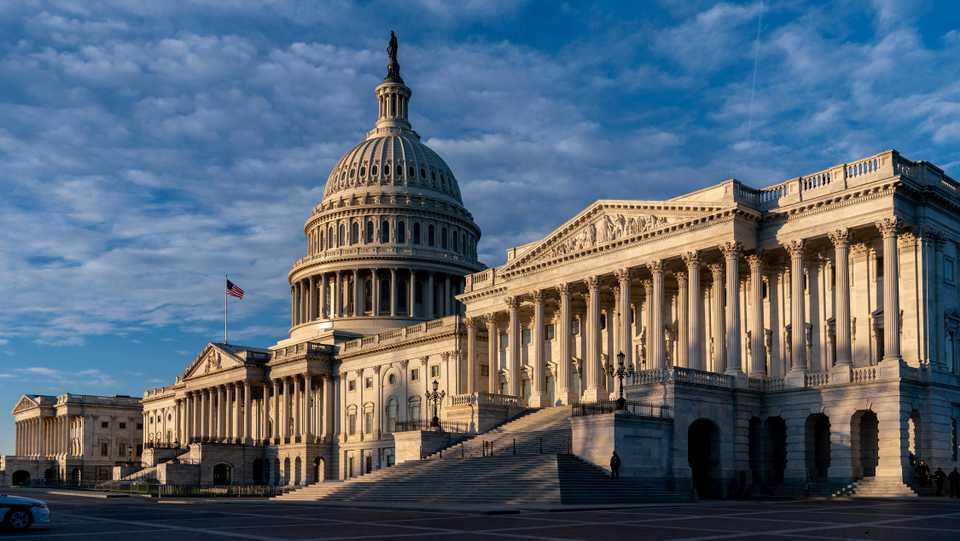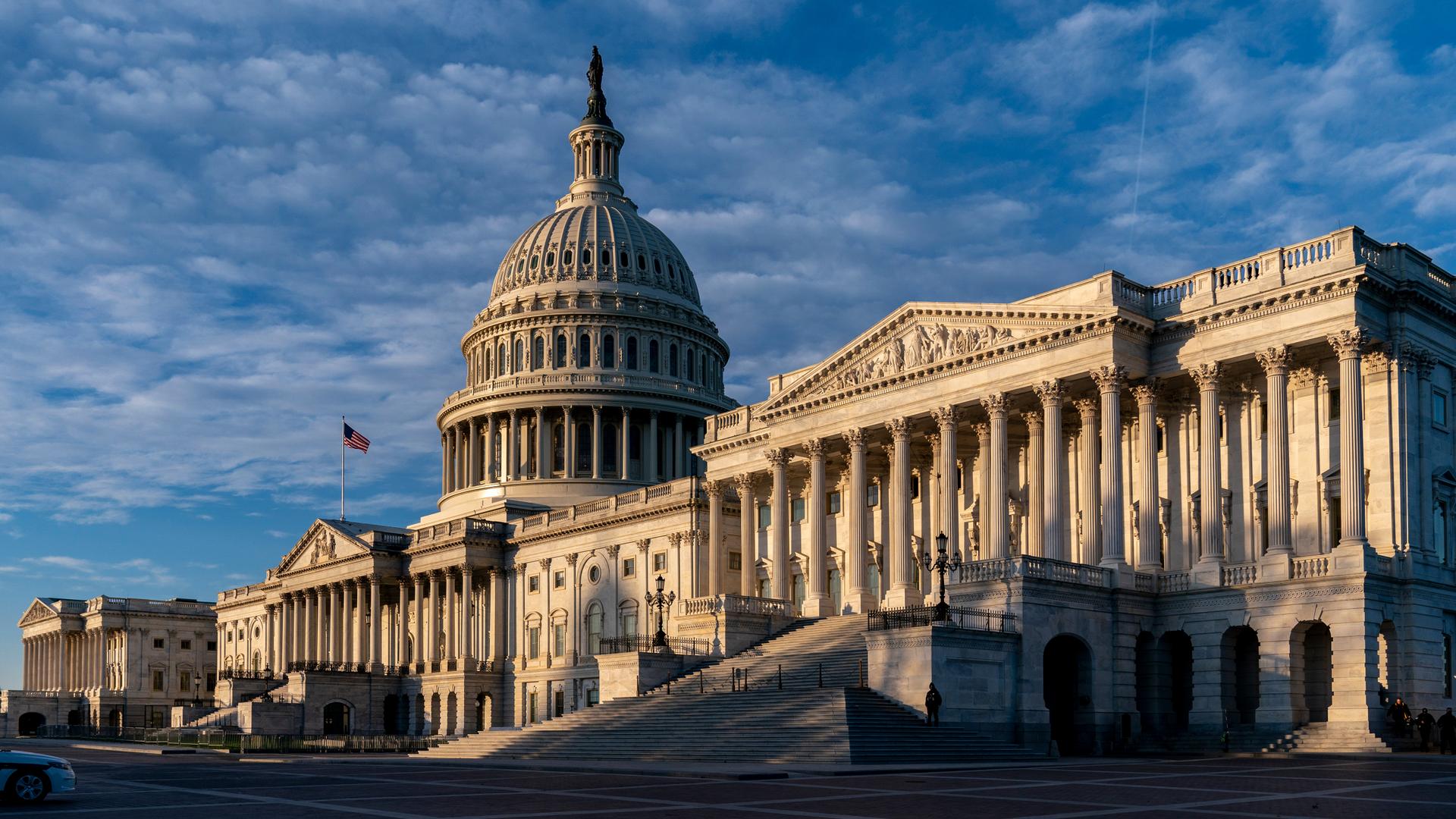
The control of the Senate is a razor-close proposition in the US election as Republicans fight to retain their majority against a surge of Democratic candidates confronting incumbent President Donald Trump’s allies across a vast political map.
Both parties see paths to victory, and the outcome might not be known on election night.
From New England to the Deep South, the Midwest to the Mountain West, Republican senators are defending seats in states once considered long shots for Democrats. Washington’s handling of the Covid-19 crisis, the economic fallout and the nation’s uneasy mood are all on the ballot.
Stunning amounts of cash have been flowing to Democrats from millions of Americans apparently voting with their pocketbooks; Republicans are tapping deep-pocketed donors to shore up GOP senators.
President Donald Trump and Democratic presidential nominee Joe Biden swooped in on key states important to the Senate as they propelled their own campaigns in a final stretch.
READ MORE: US Election 2020: Donald Trump vs Joe Biden
Securing Senate majority
Securing the Senate majority will be vital for the next president.
Senators confirm administration nominees, including the Cabinet, and can propel or stall the White House agenda.
With Republicans now controlling the chamber, 53-47, three or four seats will determine party control depending on who wins the presidency because the vice president can break a tie.
“Let’s run through the tape,” said Senate Majority Leader Mitch McConnell, making a final campaign swing on Monday in Kentucky as he faces Democratic former fighter pilot Amy McGrath.
McConnell said he hoped to remain the Republican majority leader alongside Trump. But he acknowledged the tough Senate races could flip control to the Democrats. “Obviously, that depends on what happens,” he said.
READ MORE: These ‘battleground’ states will decide the US Presidency
Senators fight for their political lives
The campaigns are competing across an expansive Senate map as Democrats put Republicans on defence deep into Trump country.
What started as a lopsided election cycle with Republicans defending 23 Senate seats, compared with 12 for Democrats, quickly became a starker referendum on the president and his party.
Some of the nation’s most well-known senators are in the fights of their political lives.
In South Carolina, GOP Senator Lindsey Graham, one of the president’s top allies rode to victory after presiding over the Senate confirmation of US Supreme Court Justice Amy Coney Barrett.
He beat Democrat Jaime Harrison.
The two crisscrossed the state in a rush of final campaigning, Graham acknowledging the tight contest after Harrison raised a whopping $100 million by October, an unheard-of sum for the state. The senator, making TV appeals for cash, said he, too, hit the $100 million mark over the weekend.
Stuck in Washington to confirm Trump’s Supreme Court nominee Amy Coney Barrett a week before Election Day, senators quickly fanned out, some alongside the president, for last-ditch tours, often socially distanced in the pandemic, to shore up votes.
GOP Senator Thom Tillis of North Carolina declared victory over his Democratic challenger, Cal Cunningham, while leading by about 95,000 votes. But the race had not been called.
He earlier on Monday joined Trump’s rally in Fayetteville.
READ MORE: US election 2020: Trump vows court fight over Pennsylvania absentee votes
Maine race
In one of the most-watched races in the nation, Maine GOP Senator Susan Collins made a final campaign stop in Aroostook County near her hometown, visiting workers in a sawmill.
She led Democrat Sara Gideon by several percentage points in a race that Gideon predicted would not be called soon.
Gideon met voters at the Whistle Stop cafe for breakfast on Monday.
The Maine race is one of several that could push past Election Day if no candidate breaks the 50 percent threshold. Collins has typically rallied support as a centrist with an independent streak, but the tight contest shows the difficulty GOP senators have appealing to Trump’s most ardent backers while also retaining support from more moderate voters.
READ MORE: Trump, Biden lawyers on standby if US election outcome heads to court
Historic contested seats
Democrats have more than one route to secure the three or four seats needed to capture the majority, and GOP strategists privately conceded the incumbents will almost certainly suffer defeats in some key races.
Younger voters and more minorities are pushing some states toward Democrats.
In Colorado, GOP Senator Cory Gardner, a first-term Republican long seen as his party’s most vulnerable Senate incumbent, lost to Hickenlooper in a formerly Republican state where demographic changes have increasingly favoured Democrats in recent years, according to projections by television networks and Edison Research.
Former astronaut Mark Kelly, had a substantial lead over Republican Senator Martha McSally in an Arizona race
Republicans also held onto an open seat in Kansas, where Republican Roger Marshall was declared the winner over Democrat Barbara Bollier.
The seat hasn’t elected a Democrat to the Senate since 1932.
“The better President Trump does in a state, the easier it is to win any race,” said Corry Bliss, a GOP strategist.
READ MORE: US Senate sets October 22 vote on Barrett’s nomination
Biggest risk states for Democrats
The biggest risks to Democrats come in Alabama and Michigan.
Republicans are expecting to reclaim the seat in Alabama, where Democratic Senator Doug Jones pulled off a rare 2017 special election win in the Trump stronghold but now wages an uphill campaign against Republican Tommy Tuberville, a former Auburn football coach.
In the presidential battleground of Michigan, Republicans have made an aggressive push for John James, a Black Republican businessman, as he rakes in cash to take on Democratic Senator Gary Peters.
“We think the numbers are moving,” said Senate Leadership Fund President Steven Law.
Still, voter turnout during the coronavirus crisis remains key, and volatile, as more Americans than ever, nearing 100 million, cast early ballots.
READ MORE: Trump holds rally, Biden attends Covid-19 briefing as cases soar
Races across the county
Both Biden and Trump touched down in Georgia, where the state is seeing a boost of new voters. Georgia’s two Senate seats are at stake and could very well push to a January 5 runoff if no candidate reaches beyond the 50-percent threshold.
GOP Senator David Perdue, the former business executive Trump calls his favourite senator, is working to fend off Democrat Jon Ossoff, another candidate who has benefited from the “green wave” of donations.
Separately, GOP Senator Kelly Loeffler faces Republican Representative Doug Collins, as well as Democrat Raphael Warnock, in a special election for the seat she was appointed to fill with the retirement of GOP Senator Johnny Isakson.
It’s expected to be a long count in races across the country.
The political landscape is quickly changing from six years ago, when most of these senators last faced voters. It’s a reminder of how sharply the political climate has shifted in the Trump era.
In Montana, Republican Senator Steve Daines is trying to brush back Democrat Steve Bullock, the governor, in a state where Trump was popular. Democrats created an opening by working hard to recruit a well-known candidate in Bullock, who also ran in the party’s primary for president.
Iowa Senator Joni Ernst is fighting for a second term against Democrat Theresa Greenfield. Texas Senator John Cornyn faces an upstart Democrat, MJ Hegar, in the once solidly Republican state.
And in Alaska, newcomer Al Gross, a doctor, has broken state fundraising records in part with viral campaign ads as he challenges GOP Senator Dan Sullivan.
READ MORE: Trump trails in virtually every poll, but can he beat the odds again?










Discussion about this post